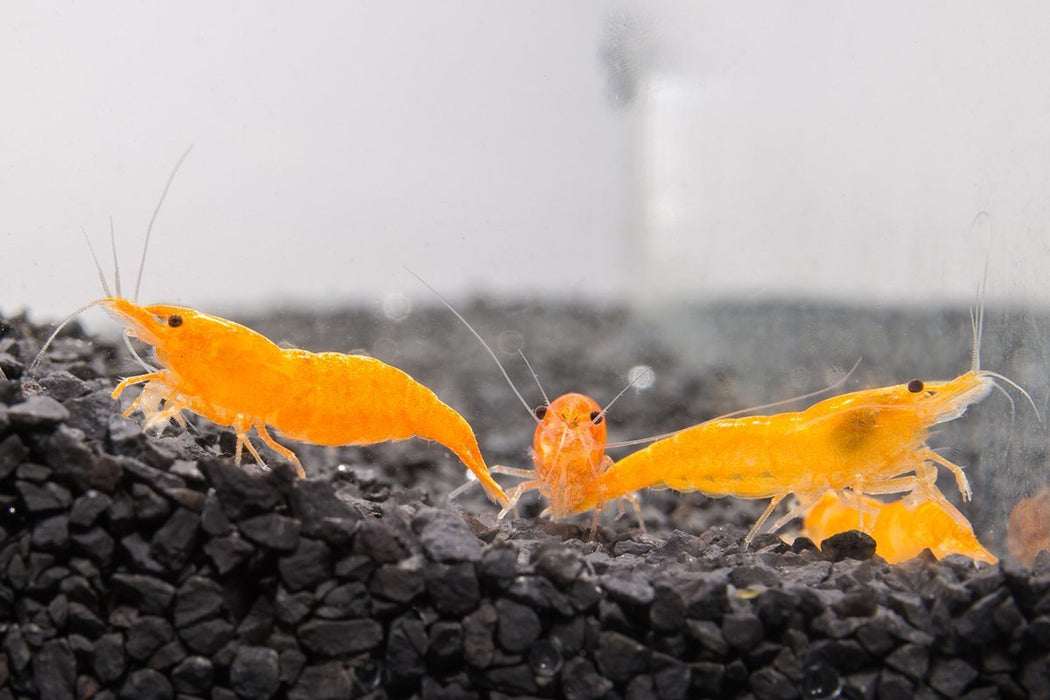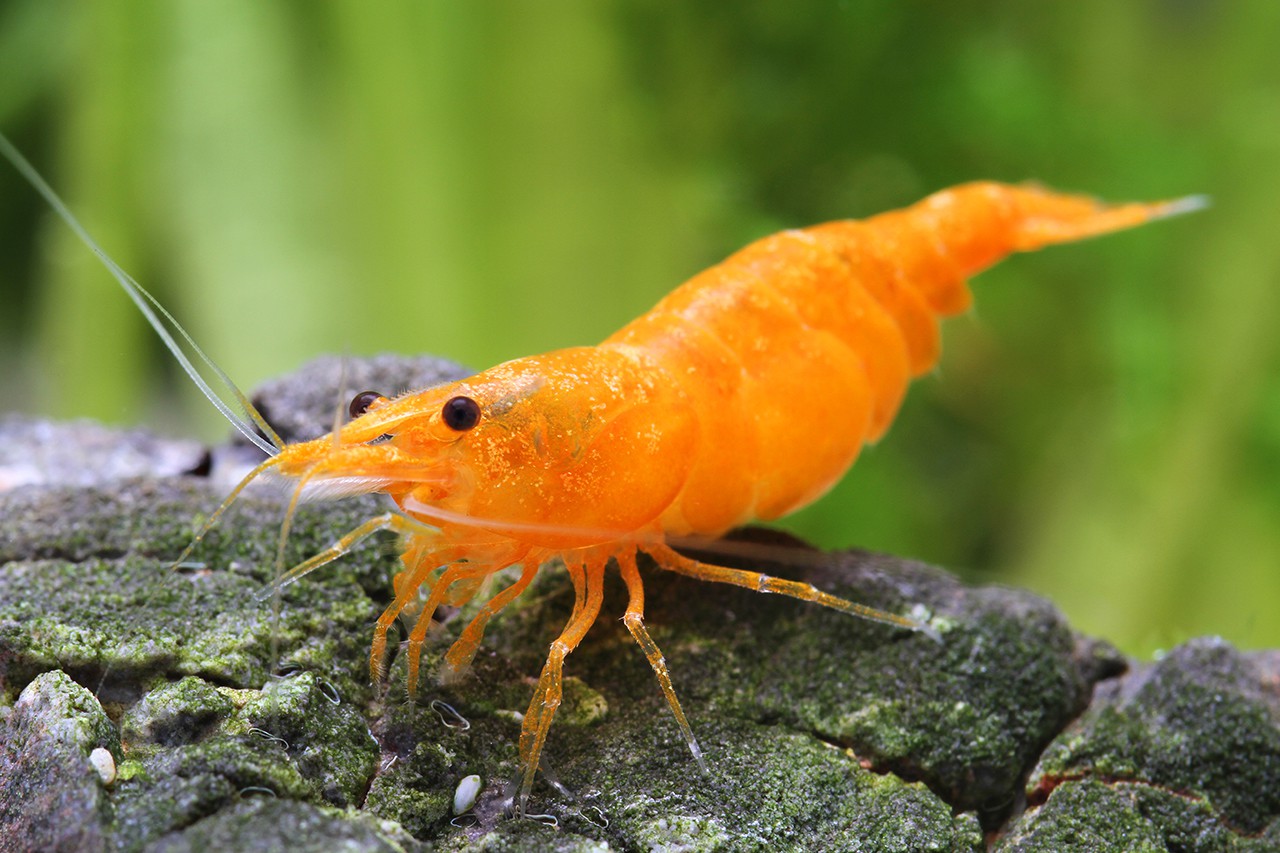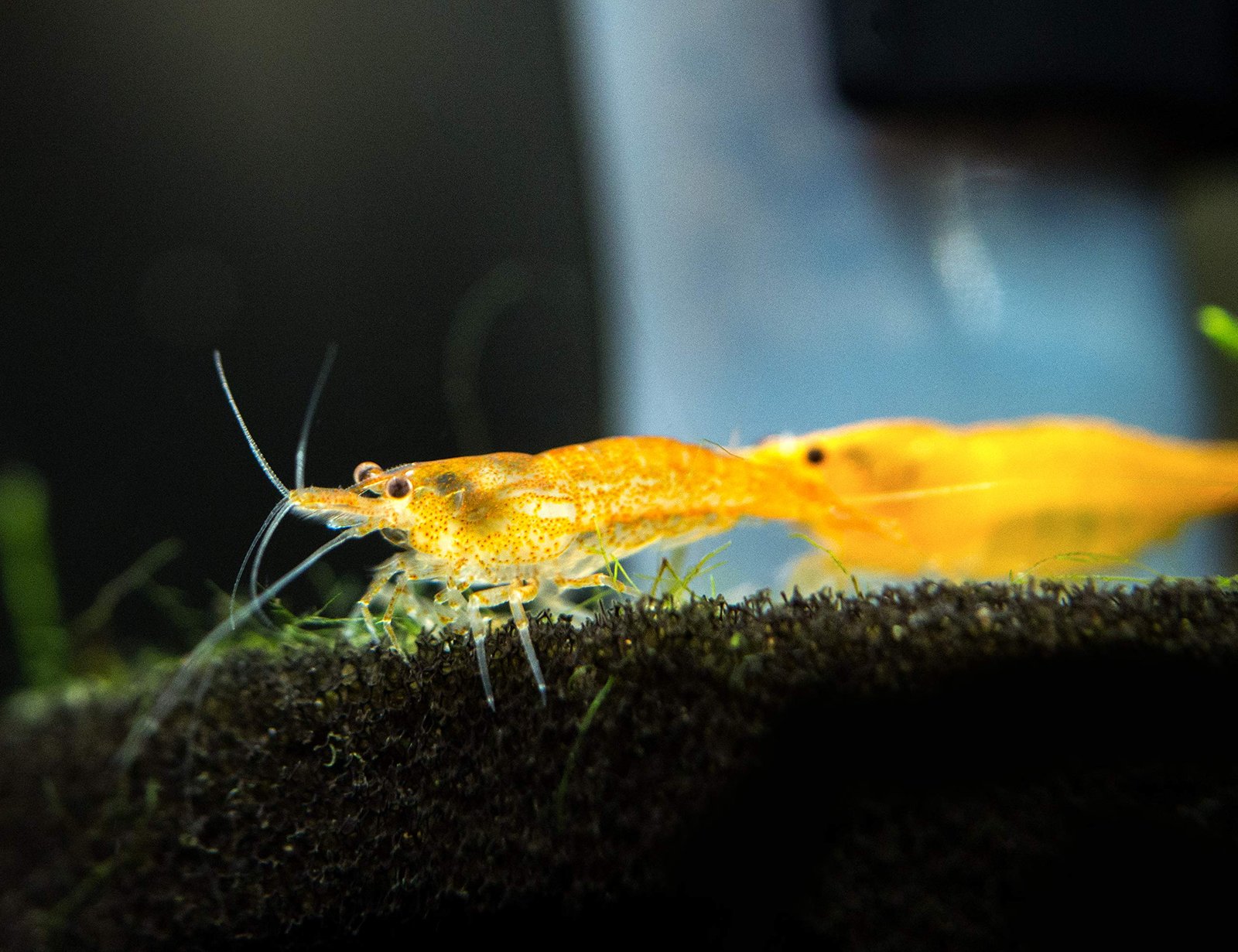Orange Sakura Tiger Shrimp can suffer from bacterial infections and poor water quality. Stress and improper diet also lead to health issues.
Orange Sakura Tiger Shrimp are popular in the aquarium hobby for their vibrant color and unique patterns. Maintaining their health is crucial for a thriving tank environment. Poor water quality often causes stress and makes them susceptible to bacterial infections.
Regular water changes and monitoring parameters like pH and ammonia levels are essential. An improper diet lacking essential nutrients can also affect their health. Feeding them a balanced diet ensures strong immune systems. Stress from overcrowding or aggressive tank mates further exacerbates health problems. Providing hiding spots and maintaining a peaceful environment helps in reducing stress levels. Proper care is key to keeping these shrimp healthy.

Credit: buceplant.com
Common Health Issues
Orange Sakura Tiger Shrimp are beautiful and delicate creatures. They can face several health problems. Understanding these common health issues helps in taking better care of them.
Bacterial Infections
Bacterial infections are a major concern for Orange Sakura Tiger Shrimp. These infections can cause:
- Loss of color
- Sluggish movement
- Decreased appetite
Symptoms may include white spots or patches on their bodies. Regular water changes and clean tanks can prevent these infections.
Fungal Diseases
Fungal diseases can also affect these shrimp. Common signs include:
- Cotton-like growths on the body
- Discoloration
- Reduced activity
Fungal infections usually arise from poor water quality. It is crucial to maintain clean water conditions to avoid these issues.
Parasitic Infestations
Parasites are another threat to Orange Sakura Tiger Shrimp. They can lead to:
- Visible tiny worms or parasites on the body
- Increased scratching against surfaces
- Weakness and lethargy
Using a quarantine tank for new shrimp can help prevent parasitic infestations.

Credit: www.fishi-pedia.com
Symptoms To Watch For
Keeping your Orange Sakura Tiger Shrimp healthy is crucial. Understanding the symptoms of health problems ensures timely intervention. Below are the key signs to watch for.
Physical Changes
Physical changes are often the first signs of health issues. Look for discoloration in the shrimp’s body. Healthy shrimp should have a vibrant orange hue. Any fading or darkening might indicate a problem.
White spots on the shell can be a concern. These spots may suggest a bacterial or fungal infection. Inspect the shrimp’s eyes; cloudy eyes can indicate poor health.
A bent or curled tail is another sign of distress. This could be due to poor water quality or nutritional deficiencies.
Behavioral Signs
Behavioral changes can also signal health issues. Watch for lethargy. Healthy shrimp should be active and mobile. If they seem sluggish, something might be wrong.
Erratic swimming is another red flag. Shrimp usually swim in a smooth, controlled manner. Erratic movements may indicate stress or infection.
Observe their feeding habits. A sudden loss of appetite could mean a health issue. Shrimp should eagerly eat during feeding times.
If you notice your shrimp are isolating themselves, it could be a sign. Shrimp usually stay in groups. Isolation can mean they are unwell.
| Symptom | Possible Health Issue |
|---|---|
| Discoloration | Bacterial or fungal infection |
| White spots | Fungal infection |
| Cloudy eyes | Poor health |
| Bent tail | Nutritional deficiencies |
| Lethargy | Stress or poor water quality |
| Erratic swimming | Stress or infection |
| Loss of appetite | Health issue |
| Isolation | Unwell |
Prevention Strategies
Prevention is key to keeping your Orange Sakura Tiger Shrimp healthy. Focus on three main areas: water quality, diet, and tank hygiene. These strategies ensure your shrimp thrive and stay disease-free.
Water Quality Management
Maintaining optimal water quality is crucial for shrimp health. Poor water conditions cause stress and disease. Regularly test the water for ammonia, nitrites, and nitrates.
Here’s a quick guide to ideal water parameters:
| Parameter | Ideal Range |
|---|---|
| Temperature | 72-78°F (22-26°C) |
| pH | 6.5-7.5 |
| Ammonia | 0 ppm |
| Nitrites | 0 ppm |
| Nitrates | < 20 ppm |
Use a reliable water testing kit. Perform water changes weekly, replacing 10-20% of the tank water. Ensure the new water matches the tank’s temperature and pH.
Diet And Nutrition
A balanced diet is essential for shrimp health. Feed your shrimp high-quality commercial food. Supplement their diet with fresh vegetables like spinach and zucchini.
Here’s a sample feeding schedule:
- Commercial shrimp pellets: Daily
- Blanched vegetables: Twice a week
- Algae wafers: Once a week
Remove uneaten food after 2-3 hours to prevent water pollution. Offer a varied diet to ensure all necessary nutrients are available.
Tank Hygiene
Keeping the tank clean is vital for shrimp well-being. Regular cleaning prevents disease and promotes a healthy environment.
Follow these tank hygiene tips:
- Siphon the substrate weekly to remove debris.
- Clean the filter monthly to maintain its efficiency.
- Check for mold and algae buildup regularly.
Also, quarantine new shrimp before introducing them to the main tank. This prevents the spread of potential diseases.
Consistent care and attention to these areas ensure your Orange Sakura Tiger Shrimp remain vibrant and healthy.
Effective Treatments
Orange Sakura Tiger Shrimp are beautiful but can face health problems. Effective treatments can save their lives. This section will discuss medications and natural remedies.
Medications
Medications help treat specific shrimp health issues. Here are some common ones:
| Health Issue | Medication | Dosage |
|---|---|---|
| Bacterial Infections | Antibiotics | Follow vet instructions |
| Fungal Infections | Antifungal Agents | Follow package directions |
| Parasitic Infections | Anti-parasitic Meds | Follow vet instructions |
Always consult a vet for correct dosage. Follow their advice strictly.
Natural Remedies
Natural remedies can be effective too. They are often safer for your shrimp. Here are some options:
- Salt Baths: Dissolve aquarium salt in water. Dip the shrimp for a short time. This can help with parasites.
- Garlic: Garlic boosts shrimp immunity. Add crushed garlic to their food.
- Indian Almond Leaves: These leaves release tannins. Tannins have antibacterial properties.
- Clean Water: Keep the tank clean. Regular water changes prevent many health problems.
Natural remedies are easy to use. They help keep your shrimp healthy without chemicals.
Quarantine Procedures
Quarantine procedures are essential for maintaining the health of your Orange Sakura Tiger Shrimp. Proper quarantine can prevent diseases from spreading in your tank. Here, we’ll cover effective isolation techniques and the necessary observation period.
Isolation Techniques
Isolation is the first step in quarantine. Use a separate tank to isolate new shrimp. Make sure this tank is cycled and has similar water parameters to the main tank. This helps reduce stress on the shrimp.
Here are some isolation techniques:
- Use a quarantine tank of at least 5 gallons.
- Ensure the tank has a filter and heater.
- Add hiding spots like plants and caves.
- Monitor water quality daily.
Observation Period
The observation period is crucial for detecting any health issues. Keep the shrimp in quarantine for at least 2-4 weeks. During this time, observe their behavior and physical condition.
Watch for these health indicators:
- Normal eating habits.
- Active swimming behavior.
- Bright and consistent coloration.
- Absence of white spots or lesions.
If any health problems arise, treat them in the quarantine tank. This prevents diseases from spreading to the main tank.
Importance Of Regular Monitoring
Regular monitoring is crucial for the health of your Orange Sakura Tiger Shrimp. Monitoring helps detect health problems early. Early detection can prevent serious issues. This keeps your shrimp healthy and happy.
Routine Health Checks
Routine health checks are essential. Check your shrimp daily. Look for signs of stress or illness. Common signs include:
- Loss of color
- Reduced activity
- Abnormal swimming
- White spots or growths
If you see any signs, act quickly. Isolate affected shrimp. Treat them with the right medication. Regular checks help catch issues early.
Record Keeping
Record keeping is very important. Keep a log of your shrimp’s health. Note any changes in behavior or appearance. Record water parameters like pH, temperature, and ammonia levels.
A simple table can help you track this information:
| Date | Behavior | Appearance | pH | Temperature | Ammonia |
|---|---|---|---|---|---|
| 2023-10-01 | Active | Bright Orange | 7.5 | 24°C | 0 ppm |
Keeping records helps identify patterns. It helps you understand what conditions are best for your shrimp. This leads to healthier shrimp.
Best Tank Conditions
Maintaining the best tank conditions is crucial for the health of Orange Sakura Tiger Shrimp. Poor tank conditions can lead to stress, disease, and even death. Ensuring optimal water parameters and selecting the right tank mates can significantly improve their lifespan.
Optimal Water Parameters
Orange Sakura Tiger Shrimp thrive in specific water parameters. Maintaining these parameters helps them stay healthy and active.
| Parameter | Ideal Range |
|---|---|
| Temperature | 72-82°F (22-28°C) |
| pH Level | 6.5-7.5 |
| GH (General Hardness) | 4-8 dGH |
| KH (Carbonate Hardness) | 1-2 dKH |
| Ammonia | 0 ppm |
| Nitrite | 0 ppm |
| Nitrate | <20 ppm |
Keep a close eye on these parameters. Regular testing is essential to ensure shrimp health.
Ideal Tank Mates
Choosing the right tank mates is important. Orange Sakura Tiger Shrimp are peaceful and can be stressed by aggressive fish.
- Small snails like Ramshorn or Nerite snails
- Non-aggressive fish such as Neon Tetras or Ember Tetras
- Other peaceful shrimp species like Cherry Shrimp or Crystal Red Shrimp
Avoid aggressive fish like cichlids or large catfish. These can harm or eat your shrimp.
Provide plenty of hiding spots. Plants, rocks, and driftwood work well. This helps reduce stress and allows shrimp to molt safely.

Credit: www.amazon.com
When To Consult A Specialist
Orange Sakura Tiger Shrimp are delicate creatures. They need specific care to thrive. Sometimes, despite your best efforts, they may fall ill. Knowing when to consult a specialist is crucial. This section will guide you on signs of severe illness and how to find a qualified veterinarian.
Signs Of Severe Illness
Recognizing severe illness in your shrimp can save their lives. Here are some warning signs:
- Loss of Appetite: Healthy shrimp eat regularly. If they stop, it’s a bad sign.
- Color Changes: Bright orange shrimp turning pale or white need help.
- Lethargy: Active shrimp suddenly becoming inactive may be ill.
- Molting Problems: Difficulty or failure to molt indicates stress or disease.
- Visible Spots or Fungus: White spots or fuzzy growths are alarming.
Finding A Qualified Veterinarian
Finding a vet who understands shrimp health is vital. Here are steps to find one:
- Research Online: Search for aquatic veterinarians in your area.
- Ask for Recommendations: Join shrimp-keeping forums and ask for advice.
- Check Credentials: Ensure the vet specializes in aquatic animals.
- Visit the Clinic: Inspect the clinic’s facilities and ask about their experience.
Here is a simple table to compare factors when choosing a vet:
| Factor | Details |
|---|---|
| Experience | Years treating aquatic animals |
| Facilities | Quality of equipment and cleanliness |
| Reviews | Feedback from other pet owners |
| Location | Proximity to your home |
Consulting a specialist ensures your shrimp get the best care. Early intervention can save their lives.
Frequently Asked Questions
How Long Do Orange Sakura Shrimp Live?
Orange sakura shrimp typically live for 1-2 years. Proper care and water conditions can help them thrive longer.
What Is The Lifespan Of A Sakura Shrimp?
Sakura shrimp typically live for 1 to 2 years. Optimal water conditions can help them reach their maximum lifespan.
Why Do My Orange Shrimp Keep Dying?
Orange shrimp may die due to poor water quality, inadequate diet, or sudden temperature changes. Ensure clean water, proper food, and stable temperatures.
How Can You Tell If Shrimp Are Sick?
Sick shrimp show signs like lethargy, loss of appetite, discoloration, or unusual swimming patterns. Check for any visible parasites.
Conclusion
Maintaining the health of Orange Sakura Tiger Shrimp is crucial for vibrant aquariums. Regular monitoring and proper care can prevent common issues. Ensure a balanced diet and clean water conditions. By addressing health problems early, you can enjoy thriving and beautiful shrimp.
Your shrimp will thank you with their lively presence.
